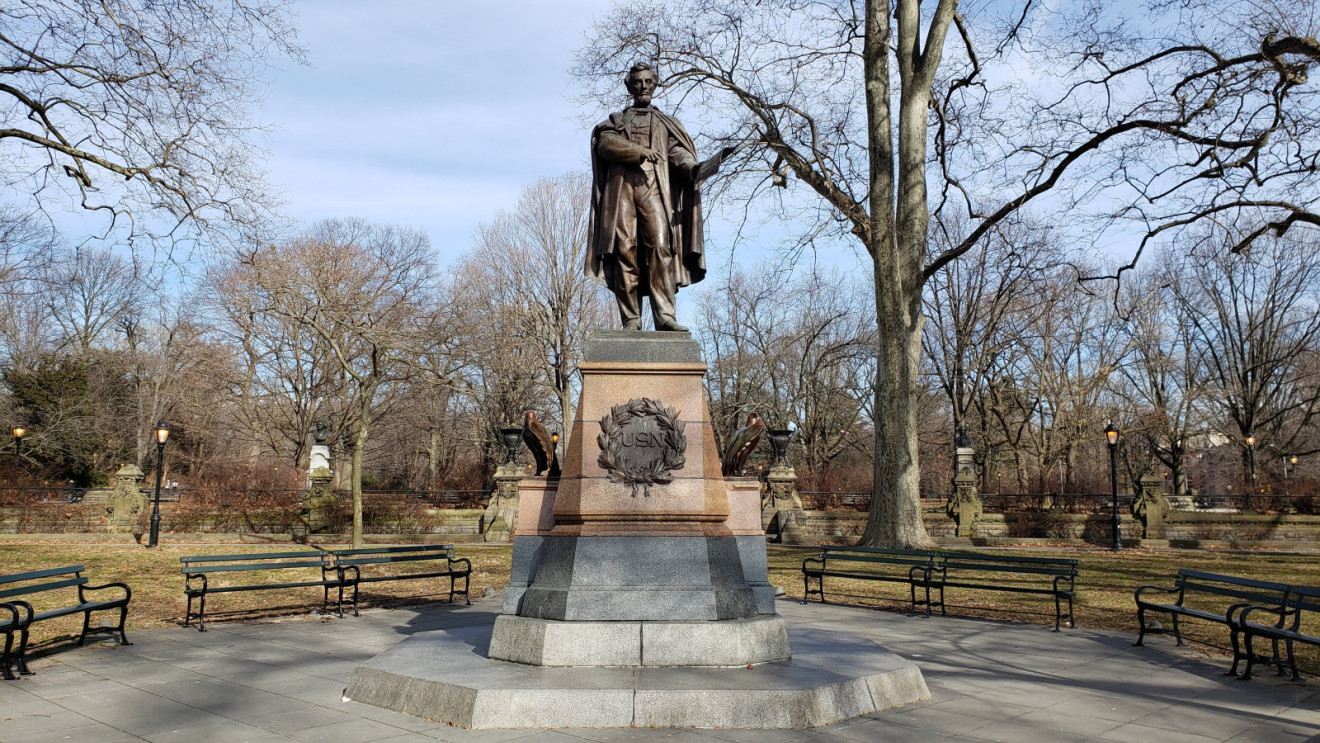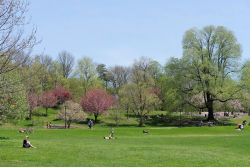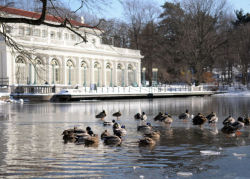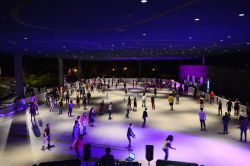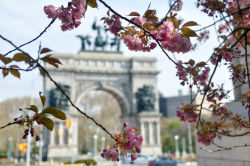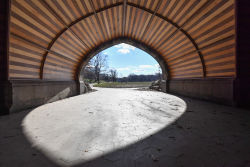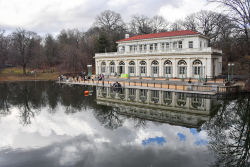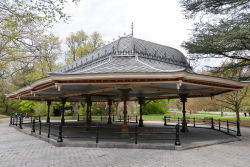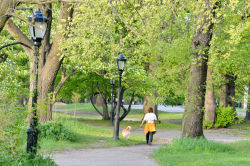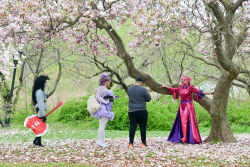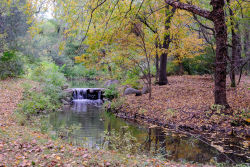Prospect Park
View all monuments in NYC Parks, as well as temporary public art installations on our NYC Public Art Map and Guide.
Abraham Lincoln
| Artist: | Henry Kirke Brown |
| Dedicated: | October 21, 1869 |
| Location: | Flower Garden |
Artwork History
One of three sculptural renditions of Abraham Lincoln (1809–1865) in New York City’s parks, this larger-than-life bronze by Henry Kirke Brown (1814–1886) watches over the Prospect Park Concert Grove and its impressive array of sculpture busts, including composers Mozart, Beethoven, Grieg, and Von Weber, as well as the poet Thomas Moore.
Abraham Lincoln was born in a log cabin in Hardin County (now Larue County), Kentucky, and was mostly self-educated. He settled in New Salem, Illinois in 1831 and worked as a storekeeper, surveyor, and postmaster while studying law. In 1834, Lincoln was elected to the state legislature and served four terms, and was elected to Congress on the Whig ticket and served from 1847 to 1849. After this single term, he left politics and dedicated himself to a successful legal practice; it was not until the repeal of the Missouri Compromise in 1854 threatened to expand the practice of slavery in the West did Lincoln rejoin the national arena. He lost two bids for the Senate in 1856 and 1858, but made an impression on his state and the nation over the course of seven debates with Democratic opponent Stephen A. Douglas.
Lincoln successfully ran for president as a Republican in 1860. While campaigning, he made his first visit to New York City in February 1860, and delivered a famous speech in Cooper Union’s Great Hall. By Inauguration Day in March 1861, seven southern states had seceded from the Union, and four more would follow in April. As the nation plunged into Civil War, Lincoln proved a skillful and thoughtful leader and orator. In 1863, he issued the Emancipation Proclamation to free the slaves and delivered the Gettysburg Address that eloquently memorialized fallen soldiers.
Lincoln won re-election in 1864 against George McClellan. Five days after Confederate general Robert E. Lee’s surrender on April 9, 1865, Lincoln was assassinated by John Wilkes Booth while attending a play at Ford’s Theater in Washington, DC. He died the next morning. Lincoln’s funeral cortege traveled to all the principal cities in the United States and arrived in New York City on April 24. His body lay in state at City Hall. Lincoln is buried at Oak Ridge, Illinois, near Springfield.
This sculpture of Lincoln was dedicated on October 21, 1869, and sponsored by local citizens in a campaign organized by the War Fund Committee of Brooklyn. It is quite similar to a sculpture of Lincoln in Union Square, also by Henry Kirke Brown, finished a year before Brooklyn’s version, but not dedicated until a year afterwards. This statue thus became the first statue of Lincoln erected in the Union.
Brown, like many of his generation, made an obligatory visit to Italy to study, but became one of a group of sculptors who attempted to establish an American sculptural idiom. Though posed in a classical stance, Lincoln is depicted as a real man, holding a copy of the Emancipation Proclamation, on which are inscribed the words, “Shall be forever free.” Brown’s nephew and pupil, Henry Kirke Bush-Brown (1857–1935) crafted the bronze bust for Gettysburg’s Lincoln Memorial (1911).
This sculpture of Lincoln originally was placed in the elliptical plaza adjoining Prospect Park, today known as Grand Army Plaza. In 1896, by then dwarfed by the massive Soldiers and Sailors Memorial Arch (1892), the statue was relocated to the lower terrace of the Concert Grove. For decades, the sculpture was the scene of Decoration Day festivities (later Memorial Day) but by the 1980s the statue had fallen on hard times. Its surface was marred by graffiti and environmental corrosion, and the two decorative bronze eagles and shields on its pedestal, as well as its scroll, had been stolen by vandals. An extensive restoration, funded by the Lincoln Savings Bank under the auspices of the Municipal Art Society’s Adopt-A-Monument Program, was completed in the spring of 1989.
Artwork Details
| Description: | Standing figure (over life-size) on integral plinth on pedestal with wreaths and insignia of US Army and Navy at front and rear, and two eagles, one proper left and one proper right |
| Materials: | Figure, wreaths and eagles---bronze; Pedestal--two types of granite |
| Dimensions: | Figure H: 8'6" W: 3' 4" D: 3'4"; Pedestal H: 10'4" W: 7'6" D: 7'6"; Eagles H: 30"; Wreath Diameter: 30" |
| Foundry: | Lamoureux |
| Donor: | Citizens of the City of Brooklyn |
| Cast: | ca. 1869 |
Please note, the NAME field includes a primary designation as well as alternate namingsoften in common or popular usage. The DEDICATED field refers to the most recent dedication, most often, butnot necessarily the original dedication date. If the monument did not have a formal dedication, the yearlisted reflects the date of installation.
For more information, please contact Art & Antiquities at (212) 360-8163.
Check out your park's Vital Signs
Clean & Safe
Green & Resilient
Empowered & Engaged Users
Share your feedback or learn more about how this park is part of a
Vital Park System
